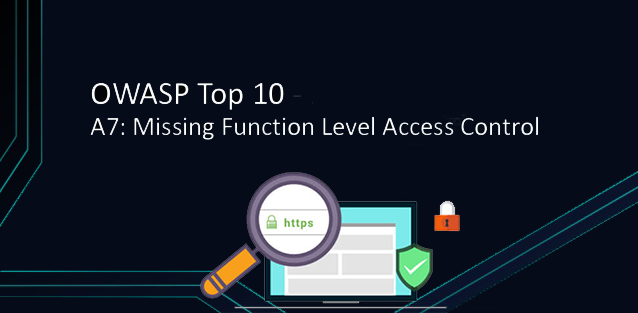The Internet of Things (IoT) consists of a network of devices that can connect to the Internet and communicate with each other. It covers a wide range of products including smart home appliances, wearable devices, industrial control systems and more. IoT makes our lives easier and more efficient in many ways.
However, the increasing use of IoT devices also brings cybersecurity risks. These devices can be seized by attackers and used for various purposes. These purposes include theft of personal data, identity theft, ransomware attacks, and the creation of botnets.
The Importance of IoT for Penetration Testing
IoT devices pose different security risks compared to traditional IT systems. These devices are generally small in size and have limited processing power . This makes IoT devices more vulnerable to cyber attacks.
data from IoT devices can give cybercriminals access to sensitive data, disrupt critical infrastructures, and even cause physical damage. Therefore, it is critical to secure IoT devices and protect them from cyber attacks.
Threats and Vulnerabilities Emerging in IoT
IoT devices introduce a variety of new threats and vulnerabilities, including:
- Weak authentication and authorization: Many IoT devices use inadequate authentication and authorization mechanisms, such as weak passwords or default credentials. This could allow cybercriminals to easily access and control these devices.
- Lack of encryption of data or Insecure communication: Many IoT devices do not use encryption or other security protocols in data transfer. This could allow cybercriminals to access sensitive information or control devices by intercepting data packets.
- Lack of updates: Many IoT devices do not receive software updates that fix vulnerabilities and bugs. This may allow cybercriminals to take over devices by exploiting these vulnerabilities.
- Lack of physical security: Many IoT devices are not adequately protected against physical attacks. This could allow cybercriminals to capture data or control devices by stealing or manipulating them.
Techniques and Tools to Pentest IoT Devices
Various techniques and tools can be used to penetration test IoT devices. Some of these techniques are:
- Network Discovery and Scanning: Network discovery and scanning is a technique used to identify IoT devices on a network and find their open ports and services. This technique is accomplished using tools such as port scanners, network scanners, and packet analyzers.
- Vulnerability Scanning: Vulnerability scanning is a technique used to find known vulnerabilities in IoT devices. This technique is performed using automatic scanners or manual scanning tools.
- Penetration Test: Penetration testing is a testing method to find vulnerabilities in IoT devices by mimicking the methods used by cybercriminals. This testing is performed by experienced security experts.
- Social Engineering: Social engineering is a technique used to gain access to IoT devices by exploiting human error. This technique is accomplished using phishing emails, fake websites, and other deception tactics.
- Physical Test: Physical testing is a testing method used to evaluate the physical security of IoT devices. This testing is performed to evaluate how resistant devices are to being stolen or manipulated.
Each of these techniques has its own advantages and disadvantages. The most appropriate technique should be chosen depending on the type, usage and criticality level of IoT devices.
The tools used for penetration testing are also diverse. Some common tools are:
- Nmap: Nmap is a popular tool used for network scanning and scanning.
- Nessus: Nessus is a popular tool used for vulnerability scanning.
- Metasploit: Metasploit is a popular tool used for penetration testing.
- Aircrack-ng: Aircrack-ng is a popular tool used to test wireless network security.
- Kali Linux: Kali Linux is a Linux distribution with various pre-installed tools for penetration testing.
Penetration testing is an important part of securing IoT devices and being prepared for cyber attacks. By working with Secromix Cyber Security, you can ensure the security of your IoT devices and minimize cyber risks.
Criteria and Standards Used to Evaluate and Report Penetration Testing Results of IoT Devices
Various criteria and standards can be used to evaluate and report penetration testing results of IoT devices. These criteria and standards are:
- CVSS (Common Vulnerability Scoring System): It is an open standard used to evaluate the severity of security vulnerabilities in computer systems. This system facilitates the comparison and prioritization of vulnerability information from different sources by providing an independent, comprehensive and objective framework.
- CWE (Common Weakness Enumeration): CWE is a standard used to classify software vulnerabilities.
- NIST Cybersecurity Framework: The NIST Cybersecurity Framework is a framework designed to help organizations manage cyber risks.
- Attack vectors: Penetration testing should evaluate what attack vectors can be used and how easily these attacks can be carried out .
- Attack impact: Penetration testing should evaluate how serious an attack might be and what effects the attack might have on the system. This assessment may include factors such as the sensitivity of stolen data, loss of system availability, and loss of reputation.
- Risk level: According to the penetration test results, the risk level of the detected vulnerabilities should be determined. This level can be classified as high, medium or low depending on the likelihood and impact of the vulnerability being exploited.
- Recommendations: The penetration test report should include recommendations to eliminate the detected vulnerabilities. These recommendations may include measures such as applying security patches, strengthening authentication mechanisms, and encrypting data. The report should be clearly written and understandable by non-technical audiences.
Challenges Encountered in IoT Penetration Tests
As IoT begins to cover every aspect of our lives, it also brings increasing risks in terms of cyber security. To minimize this risk, penetration testing is a critical method to assess the security of IoT devices and uncover possible vulnerabilities.
Penetration testing frequency varies depending on the usage and criticality level of IoT devices. It is generally recommended to perform a penetration test at least once a year. The cost of these tests may vary depending on the scope of the test and the techniques used. However, penetration testing of IoT devices tends to be less costly compared to traditional IT systems. There are some challenges in penetration testing of IoT devices compared to traditional computing devices. These challenges are:
- Complexity: IoT devices may use a variety of operating systems, protocols, and hardware. This adds to the complexity of penetration testing.
- Physical access: Physical access to some IoT devices can be difficult. This can make penetration testing difficult.
- Limited resources: Many IoT devices have limited processing power and memory. This may limit the use of penetration testing tools.
Ensure IoT Security with Secromix Cyber Security
Secromix Cyber Security offers penetration testing services specifically designed for IoT devices. Our experienced security experts conduct discovery and inventory of IoT devices, detect and evaluate vulnerabilities using automated and manual penetration testing techniques, and make recommendations to reduce risk.
Contact Secromix Cyber Security to secure your company’s IoT infrastructure and be prepared against cyber attacks. Our experts help you maximize your IoT security by providing penetration testing services tailored to your needs.
Penetration testing is an important part of securing IoT devices and being prepared for cyber attacks. By working with Secromix Cyber Security, you can ensure the security of your IoT devices and minimize cyber risks.
The Internet of Things (IoT) is revolutionizing many aspects of our lives. Although IoT makes our lives easier , it also brings cyber security risks. Penetration testing of IoT devices is one of the most effective methods to reduce these risks and ensure security. In this article, we discussed the threats and vulnerabilities created by IoT in terms of penetration testing, penetration testing techniques and tools, and evaluation and reporting of test results.








